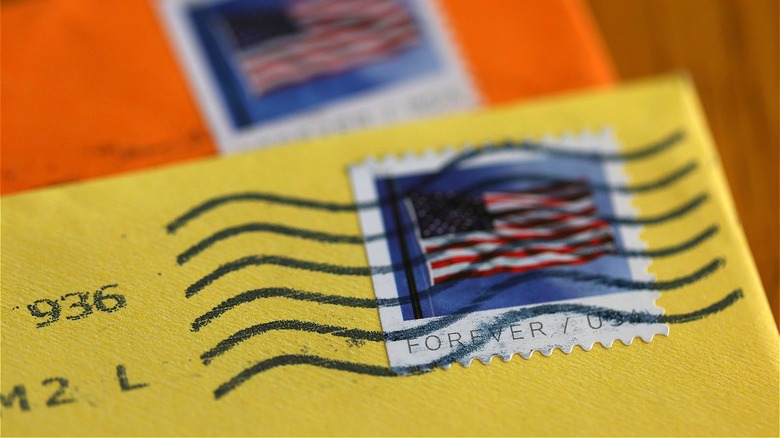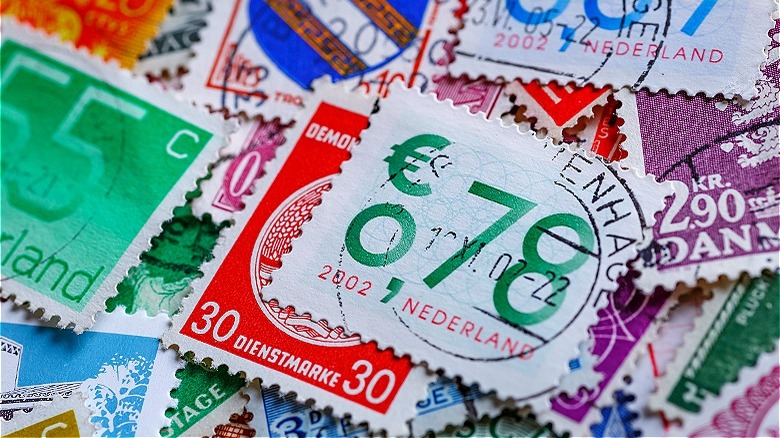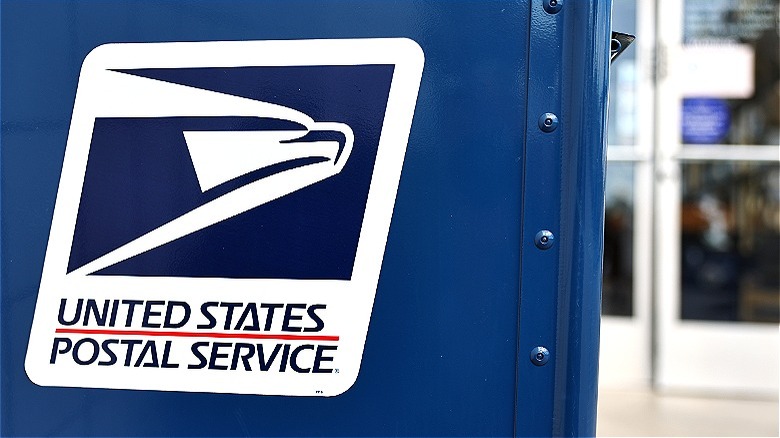How Does The US Stamp Price Compare To The Rest Of The World?
Despite the fact that the United States Postal Service raised the price of a Forever stamp in January 2024 (to 68 cents), the price is set to jump another five cents in July per a proposal from the USPS. This would bring the cost of a Forever stamp up to 73 cents. If approved, the increase would mark the sixth price hike since 2021 (and the 18th since 2000). This latest stamp increase is also part of a larger overall price increase that would raise other services and product prices by 7.8% in July.
If you're wondering why it feels like the Postal Service has been raising prices more frequently, the Postal Regulatory Commission established new pricing authorities for the USPS in November 2020. These new rules allowed the Postal Service to implement price increases above inflation on popular USPS products, like first-class mail. The USPS has increased its prices twice a year since then as a way of maximizing revenue in the hopes of becoming more self-sufficient as an agency.
While the price increases overall might have you complaining, it's important to realize just what a powerhouse the Postal Service truly is. In 2021 alone, the USPS handled 50.2% of the total domestic mail volume delivered across the entire globe. The next largest domestic mail markets (Japan and Germany) both only reflected about 6% of the mail total. Plus, while mail prices have gone up, it's important to look at USPS prices compared to mail prices around the world to get a better idea of how affordable USPS really is.
How do US stamp prices compare?
While many Americans might be gawking at the seemingly sudden rise in U.S. stamp and mailing prices, they might want to reconsider complaining. You might be surprised to learn that U.S. stamp prices are still significantly lower than many other countries. In fact, according to a U.S. Postal Service Office of the Inspector General report, as of June 2023 the United States had one the lowest standard domestic letter prices out of 31 countries. Just four countries charged less for a standard domestic letter than the U.S. (Serbia, Russia, Brazil, and Japan). However, when these letter prices were adjusted for purchasing power parity across all 31 countries, the U.S. had the lowest letter price overall. Meanwhile, Italy was the most expensive with an adjusted purchasing power rate price of $4.48 to mail a standard letter.
It's also worth mentioning that USPS price increases since 2018 have still been some of the lowest increases across the world. According to the same U.S. Postal Service OIG report, the average price increase for postage since 2018 was 55% across the 31 sampled countries. However, the U.S. only experienced a 26% increase. It's also important to remember how much inflation has affected prices globally. In the same sampled 31 countries, the average price increase over the record level of inflation was 33%, meaning postage prices have far outpaced inflation in most of the surveyed countries. However, U.S. prices have only increased about 5% more than the inflation rate.
Budget problems at USPS
In 2021, the USPS presented a 10-year budget-cutting plan that included everything from slower deliveries to increased rates to reduced post office hours. This plan was the result of long-term and significant budget deficits. In fact, a major contributing factor to the 2020 financial pricing authority changes (the ones that have led to the recent uptick in stamp prices, among other expenses) was the ultimate goal that the USPS could become a self-sufficient organization able to operate on its own income. However, even with increased mailing costs, the USPS is still struggling financially. In the first quarter of 2024, the Postal Service reported a $2.1 billion net loss, representing more than a doubling in its losses since the same period in 2023 (when it reported a $1 billion loss).
There are a number of factors cutting into the Postal Service's financial goals. Namely, even though the USPS had a 2.7% increase in package revenues, and a 0.5% increase in total revenue compared to the same time in 2023, its operating expenses grew by almost 5%. The agency has also pointed to higher inflation rates as well as over-contributions to their Civil Service Retirement System as other factors affecting its overall profitability. Despite this, the USPS remains optimistic about its changes. Postmaster General Louis DeJoy explained to the USPS Board of Governors, "Change is never easy, even when it's for the better [...] To those in the nation that are affected by our intermittent service impacts, we apologize, and we're working hard to improve our service."


